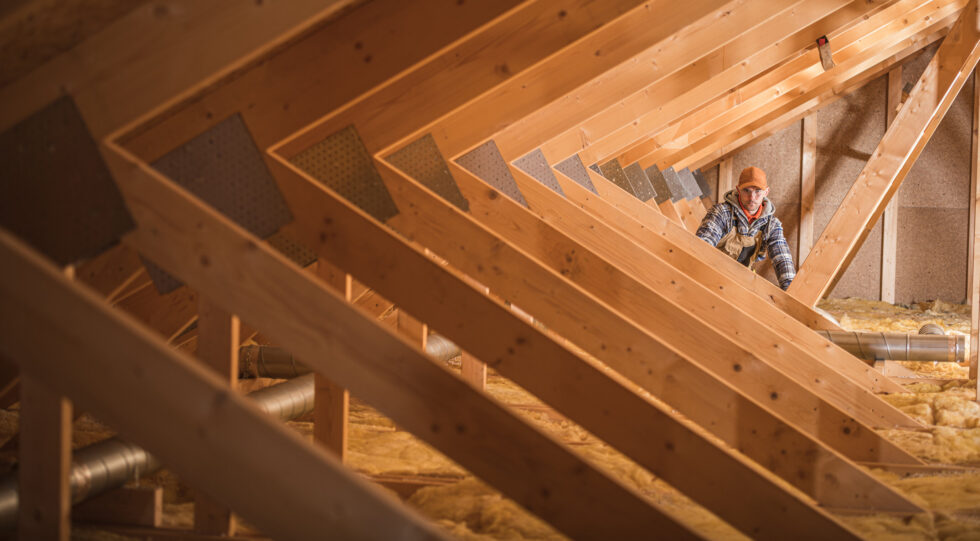
Those who are building or renovating their homes often wonder whether roof insulation is worth the money. It’s not always standard to install insulation directly into the roof slope itself, begging the question of necessity for many homeowners.
Proper roof insulation might not be seen in all houses, but it does have advantages. Not only does it prevent unnecessary damage, but it also stops you from racking up serious heating and cooling costs during extreme weather. Poor or non-existent insulation is very expensive because of the amount of energy being wasted trying to keep a home at an ideal temperature.
However, many homes don’t have roof insulation, and rather have just ceiling insulation. This is quite common, and under some circumstances can work well, rendering roof insulation in addition to an insulated ceiling unnecessary.
What’s The Difference Between Roof and Ceiling Insulation?
Roof insulation refers to the insulating of the actual roof slope itself. Ceiling insulation, however, is the installation of any type of insulation in the floor nearest the roof structure. Insulating a ceiling is significantly easier, and sometimes cheaper, than a roof, which is why if you have to choose between one or the other, ceiling insulation might be the better option.
That being said, there are some circumstances where your roof must have insulation. For example, any home where the ceiling is a part of the roof deck, like with cathedral ceilings, will require roof insulation to regulate the internal temperature of the house.
If ceiling insulation is necessary or preferred for your home, there are multiple types of ceiling insulation to choose from including:
- Fiberglass
- Cellulose
- Foam
- Spray Foam
- Mineral Wood
- Natural fiber
- Denim insulation
What is Roof Insulation?
If you like in an area where temperatures reach either hot or cold extremes regularly, you can’t be too careful with your insulation. In these conditions, roof insulation is recommended, and is typically constructed from the following materials:
- Fiberglass Batt Insulation: This is by far the most common and inexpensive method, and involved the placement of fiberglass sheets in between attic rafters. However, this material isn’t the best at preventing air leakage and is also highly susceptible to unhealthy mold and mildew growth.
- Rigid Foam Insulation: Another common insulation material, rigid foam comes in sheets or panels that can be specifically sized to fit the roof slope. These panels can be installed between roofing rafter and also create an effective barrier t protect your home from air leaks and damp conditions.
- SPF (Spray Foam Insulation): Similar to fiberglass insulation, this material is sprayed between the attic rafters to form a seamless barrier against leaking air and moisture. Because of this, Spray Foam Insulation is a fantastic option for the conversion of an attic or anywhere where the roof directly protects a living space.
The advantages of roof insulation
A properly sealed attic or well-installed insulation in a roof is much more efficient in terms of energy. A roof is a very large surface area, and can easily lose heat during the winter if not properly insulated. Roof insulation will also make your air conditioning significantly more effective in the hot summer months.
Having your roof insulated can also work wonders in preventing any long-term damage from ice dams, condensation, or moisture. If you live in a very cold climate, roof insulation is typically a must. Freezing conditions are very damaging to a poorly insulated roof and can lead to expensive repairs. Whatsmore, roof insulation, and proper ventilation work together to help keep your home free protected, and damage-free.
Although installing roof insulation might be costly in the beginning, it will certainly save you money in the long run. Roof insulation significantly increases the energy efficiency of a home. Not to mention protects your roof from damage caused by cold conditions and ice. Such damage can be exorbitant to repair, so forking out the upfront cost for the installation of roof insulation is advisable.

